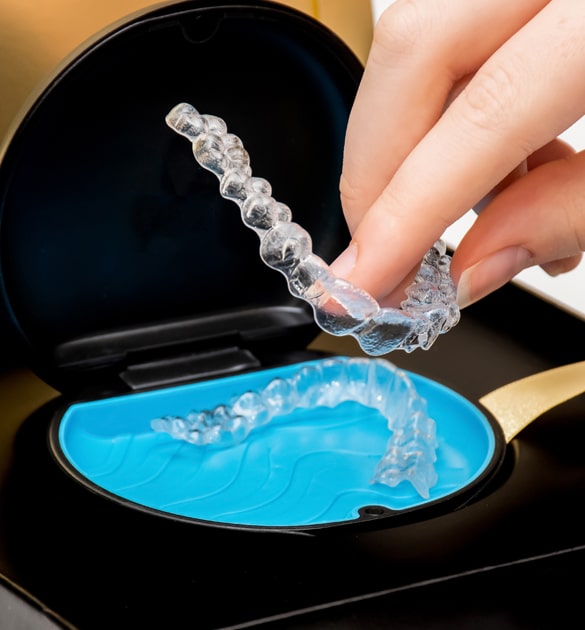
When it comes to early orthodontic care, Invisalign First offers a modern alternative to traditional braces for young children. Many parents wonder when the best time is to start this treatment to help guide their child’s dental development effectively. Understanding the ideal age range for Invisalign First can help families make informed decisions and set their kids on the path to a healthier smile.
Invisalign First is designed specifically for children who still have some baby teeth but are beginning to develop their permanent teeth. This phase is crucial because it allows orthodontists to address common early dental issues such as crowding, spacing, and bite problems before they become more complicated.
Why Early Treatment Matters
Starting orthodontic treatment too late may mean more extensive procedures are needed down the line. On the other hand, beginning too early could lead to unnecessary treatment or longer than needed use of appliances. Invisalign First is meant to strike a balance, offering gentle intervention while a child’s jaw and teeth are still growing.
By guiding the growth of teeth and jaws at this stage, Invisalign First can improve function and appearance. Early intervention can prevent severe misalignment, reduce the risk of trauma to protruding front teeth, and promote healthier oral habits. It may also make any future orthodontic work simpler and faster.
Typical Age Range for Invisalign First
Most orthodontists recommend starting Invisalign First treatment between the ages of 6 and 10. This period usually corresponds to the mixed dentition phase, where children have a combination of baby teeth and emerging permanent teeth.
At around age 6, the first permanent molars and incisors typically come in. These teeth play a key role in establishing a stable bite and jaw alignment. If issues like crowding, crossbites, or gaps are detected at this stage, Invisalign First can help correct these problems as the rest of the adult teeth develop.
Children older than 10 may have most or all of their permanent teeth already erupted, which might make them candidates for traditional Invisalign or other orthodontic options rather than the “First” version designed for younger mouths.
Signs Your Child May Benefit from Invisalign First
Parents should watch for certain signs that suggest a child might need early orthodontic evaluation. Some red flags include:
- Difficulty biting or chewing food properly
- Speech issues caused by jaw or teeth alignment
- Thumb sucking or other habits affecting teeth position
- Crowded or spaced teeth noticeable even with baby teeth
- Jaw shifting or clicking when opening or closing the mouth
- Teeth that do not meet properly when biting
If any of these signs are present, scheduling a consultation with an orthodontist can help determine if Invisalign First is appropriate.
How Invisalign First Works for Kids
Invisalign First uses clear, removable aligners that gently move teeth into better positions over time. The treatment plan is customized for each child based on detailed scans and models of their teeth. These aligners are designed to fit comfortably and allow kids to eat and brush normally.
Unlike traditional braces, Invisalign First does not involve brackets or wires, which can be uncomfortable or cause irritation. Since the aligners are clear, they are less noticeable, which can be important for a child’s confidence.
Treatment usually involves a series of aligners changed every few weeks. The orthodontist monitors progress and adjusts the plan as needed. Most children find the treatment easy to follow, especially with parental support.
Benefits of Starting Invisalign First Early
- Less Invasive Treatment: Early alignment can reduce the need for tooth extractions or jaw surgery later.
- Improved Oral Hygiene: Removable aligners make it easier for kids to maintain good brushing and flossing habits.
- Enhanced Self-Esteem: Correcting visible dental issues early helps children feel more confident about their smiles.
- Better Jaw Development: Guiding jaw growth in younger children can improve facial symmetry and function.
- Shorter Treatment Time: Addressing problems early can lead to quicker overall orthodontic care.
What to Expect During the Invisalign First Process
The journey begins with an orthodontic evaluation, including X-rays and scans. From there, a treatment plan is created, tailored to your child’s needs.
Your child will wear the aligners for about 20-22 hours per day, removing them only for eating, drinking (except water), brushing, and flossing. Regular visits with the orthodontist ensure everything is on track.
Parents should help encourage their child to keep the aligners in as prescribed. Consistency is key for the treatment to be effective.
Is Invisalign First Right for Every Child?
While Invisalign First works well for many young patients, it may not be suitable for all cases. Some children with severe bite issues or complex dental problems might require traditional braces or other interventions. An orthodontist’s assessment is essential to determine the best approach.
Also, children must be responsible enough to care for their aligners properly. Losing or damaging them can delay progress and increase costs.
Conclusion
Starting Invisalign First between ages 6 and 10 offers an effective window to address early orthodontic concerns. This treatment can improve dental health and guide growth with minimal disruption to a child’s life.
If you notice any alignment issues or have questions about your child’s dental development, talk to an orthodontist familiar with Invisalign First. Early evaluation and intervention can set your child up for a healthier, more confident smile that lasts a lifetime.